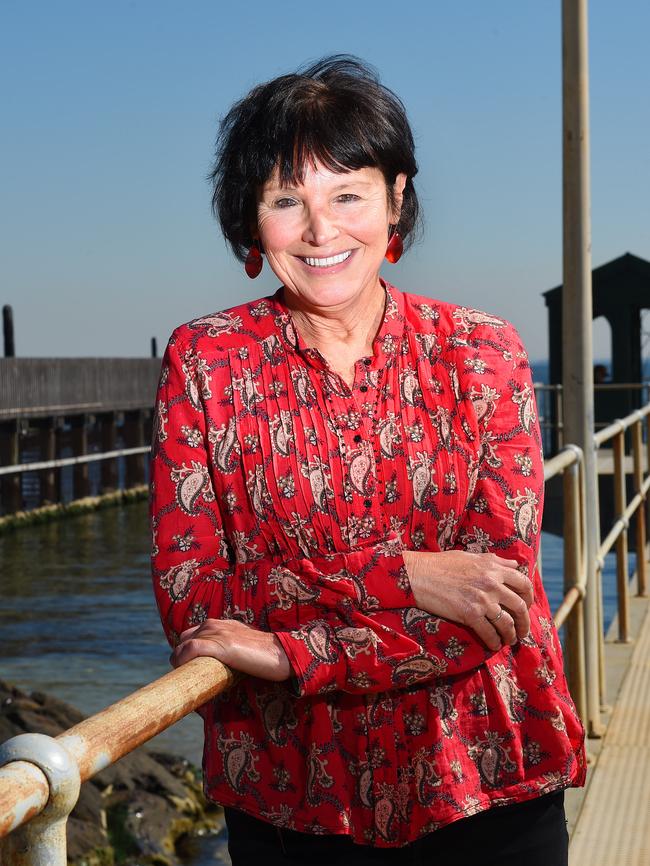True crime queen Liz Porter uncovers fascinating history of forensics in Victoria
NOT many people know that Victoria Police were trailblazers in the field of forensics — but now top true crime author Liz Porter is uncovering the fascinating story of how cutting edge techniques solved some of Melbourne’s most infamous crimes.
Inner South
Don't miss out on the headlines from Inner South . Followed categories will be added to My News.
BETWEEN 1982 and 1986, the Narong Road Rapist menaced, robbed, assaulted and raped several women in Oakleigh South — but managed to evade the police.
In 1988, detective Stephen Fontana — now Assistant Commissioner — was absolutely certain the attacker was a bathroom tiler called George Kaufman. He just needed a critical break to lock him up.
Bandali Debs claims he was lone gunman during Silk-Miller murders
Mr Cruel child killer case: $1 million reward announced in Karmein Chan case
True Crime writer Liz Porter on the forensics breakthroughs catching killers
The rapist, a “smart criminal”, always targeted ground-floor apartments and wore gloves and
a balaclava to cover his tracks.
Police set up Operation Shadow and almost caught Kaufman in the act.
But the big break came after they decided to invest in a then barely heard-of forensic science called “DNA testing”.
They sent forensic scientist Dr Stephen Gutowaski to New York to test samples of Kaufman’s DNA.
It was a risky and costly venture but the DNA eventually put Kaufman in prison after he pleaded guilty to 18 counts of rape.
His case was the first criminal investigation in Victoria to be successfully solved using DNA and is forever etched in the history of forensics in the state.

Brighton author and journalist Liz Porter will soon explore that history through a PhD at La Trobe University.
“I had this idea that I was determined to write about the history of forensics, because it was so important,” she said.
“The Kaufman case shows that it is a history people needed to know about.”
Porter, the author of true crime books Written on the Skin and Cold Case Files: Past crimes solved by new forensic science, will make Victoria Police’s foray into DNA testing a prime focus of her research.
“Not many people know this but Victoria Police was one of the first agencies in the world to invest in forensic DNA testing,” Porter said. “(It was) ahead of the game when it came to DNA testing and I want to explore why that is and also who was responsible.”
It was the fourth authority in the world to conduct its own DNA testing and the second to start its own DNA database.

“Victoria Police has always been progressive and there were some very smart scientists working for it, but it was someone high up in police command that made the call to invest a lot of money,” she said.
“It’s not something you’d expect from old-school coppers, especially as it was extremely difficult to explain exactly what DNA testing was.”
Porter said it was important to chronicle the history of forensic DNA testing because it was a “vital game-changing moment” for Victoria Police.
“The science is widely accepted today but in the early 1980s it was virtually unknown,” she said.
“It took a lot of forethought, money and guts for Victoria Police to go down this path, especially as no one else in the country was doing it.
“DNA opened the door to so many things but particularly to solving cold cases.”
In 1999, Victoria Police reached another forensic milestone when it became the first in Australia to record a conviction using a DNA “cold hit”.
Small-time crim Wallid Haggag was the unlucky crook who put his name in the history books after he was caught by police breaking into a car in November of 1998.

One of the officers recognised Haggag, who he suspected was responsible for a series of robberies and burglaries.
They took a sample of Haggag’s blood, which returned a DNA database hit linking him to multiple burglaries. He was jailed for 18 months.
Kaufman and Haggag were early success stories but there have been misses as well as hits along the way.
Forensics was successfully used to identify the body of Karmein Chan, who went missing from her Templestowe home in April 1991.
However, the prime suspect in her abduction and murder, a serial rapist dubbed “Mr Cruel”, was never caught.
It was believed Mr Cruel had knowledge of forensic techniques as he always washed himself and the victims he released to avoid leaving any trace.

Porter’s research will go beyond DNA and begin back when the first Victoria Police forensics unit opened in 1903.
She will then take it to the opening of the Victoria Police Forensics Services Centre at Macleod in 1983 and beyond.
She will chronicle how forensics, not just DNA, were crucial in several high-profile cases.
Convicted cop killer Bandali Debs was found guilty of shooting police officers Gary Silk and Rodney Miller thanks to crucial evidence gathered by forensic investigator Peter Ross.
Ross travelled to Korea with glass fragments found at the scene to prove they came from the windscreen of Debs’ Hyundai Excel, which in turn proved he was present when Sgt Silk and Senior Constable Miller were murdered.
In another example, Victorian scientist Tony Raymond did the key forensic work which helped exonerate Lindy Chamberlain of the murder of her daughter Azaria.

Porter’s passion for forensics is evident but she wants to stress it is only one element.
“Shows like CSI depict forensics as the only method to get a conviction, which just isn’t true in the real world,” she said.
“I write about it because I’m hooked on the science of it and the magic of the way that a forensic expert could actually read the information in front of him or her.
“The detectives are heroes, the scientists are heroes but the science is the ultimate hero.”
Porter’s latest book Crime Scene Asia:When forensic evidence becomes the silent witnessis available at booktopia.com.au
MORE NEWS


